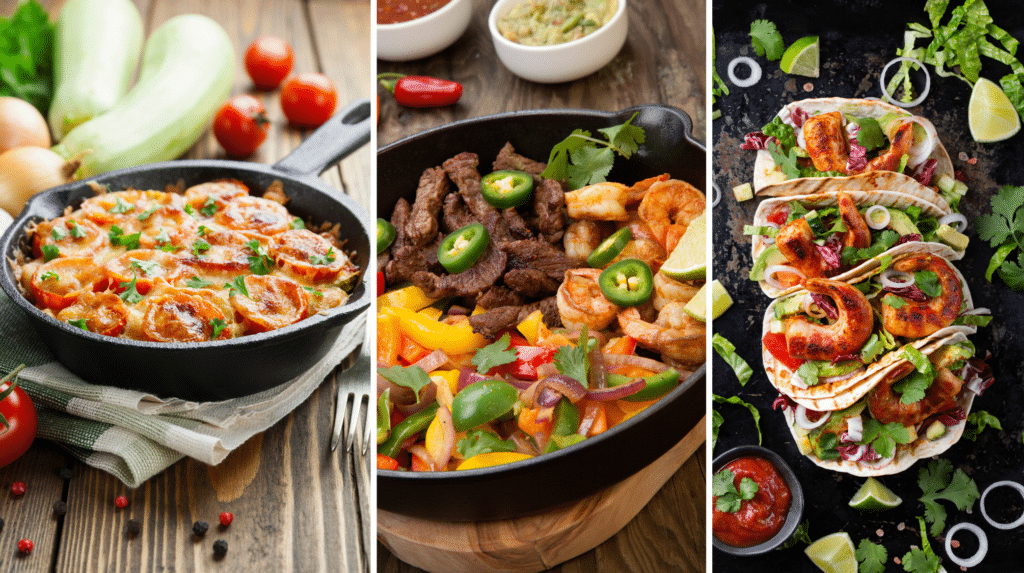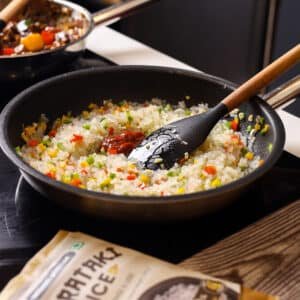
Finding the Right Konjac Recipe to Start a Food Business
- admin
- 1 12 月, 2023
- 10:16 上午

Table of Contents
Are you considering starting a food business centered around Konjac? The right Konjac recipe is key to the success of your venture. Konjac, also known as elephant yam or Konnyaku, is a highly valued plant for its health benefits and versatile culinary uses. With an increasing demand for healthier food options, konjac’s low-calorie and high-fiber properties make it a popular choice for health-conscious consumers. In this article, we’ll explore how to find the perfect Konjac recipe to kickstart your food business.
Understanding the versatility of Konjac recipes

Before diving into specific recipes, it’s essential to understand the versatility of konjac. This unique ingredient can create a wide range of food products, including noodles, rice, snacks, and vegan alternatives to meat and seafood. Its ability to absorb and complement a variety of flavors makes it an excellent base for innovative recipes that cater to diverse dietary preferences.
When it comes to using konjac as a base ingredient for your recipes, the options are endless. Here are some versatile konjac recipe types to consider for your food business venture:
- Konjac Noodles: Experience Konjac noodles‘ delightful texture and versatility, a perfect substitute for traditional wheat-based noodles.
- Konjac Rice: Embrace the low-carb trend with Konjac rice, a healthier alternative to conventional rice.
- Konjac Snacks: Explore the world of innovative Konjac snacks or crackers to cater to on-the-go consumers.
- Konjac Desserts: Delight your customers with guilt-free indulgence, from Konjac jelly to puddings.
How to select the best Konjac recipe

1. Researching popular Konjac-based dishes
To develop a successful Konjac recipe for your food business, it’s essential to research popular Konjac-based dishes that resonate with consumers. Explore traditional Asian recipes such as konjac noodles in savory broths, stir-fries, or cold salads. Additionally, look into modern adaptations of konjac, such as plant-based konjac “scallops” and “calamari,” which cater to the growing demand for sustainable and cruelty-free food options.
2. Leveraging nutritional benefits
When creating a Konjac recipe, leveraging its nutritional benefits can be a powerful selling point for your food business. Highlighting konjac’s low-calorie, high-fiber, and low-carb nature in your recipes can appeal to health-conscious individuals and those following specific dietary plans, such as keto or low-carb diets. Emphasize the health benefits of Konjac as a key element of your marketing strategy.
3. Developing innovative Konjac-based products
In addition to traditional recipes, consider developing innovative konjac-based products that stand out in the market. This could include ready-to-eat konjac meal bowls, konjac-based desserts, or on-the-go snacks that showcase the versatility of this extraordinary ingredient. Diversifying your product range with inventive Konjac recipes can position your food business as a pioneer in the industry.
4. Quality ingredients and production methods
While designing your konjac recipe, pay close attention to the quality of ingredients and production methods. Opt for high-grade konjac powder or konjac noodles to ensure consistency and superior texture in your final products. Additionally, explore different cooking and preparation techniques to enhance your Konjac-based offerings’ overall quality and appeal.
5. Building a brand identity around Konjac
To successfully introduce your konjac recipes to the market, focus on building a brand identity that communicates the unique qualities of konjac. Incorporate storytelling elements highlighting Konjac’s rich history and cultural significance, emphasizing its role as a staple ingredient in traditional and contemporary cuisines. So, illustrate how your food business is dedicated to showcasing the beauty and versatility of Konjac through thoughtfully crafted recipes.
6. Collaborating with culinary experts
Seeking input from culinary experts and chefs can provide invaluable insights into refining your konjac recipes. So, collaborating with professionals specializing in plant-based cuisine or alternative dietary options can elevate the culinary appeal of your Konjac-based dishes. Their expertise and creativity can help you develop recipes that are not only delicious but also visually appealing and nutritionally well-balanced.
Finding the right Konjac recipe – Conclusion
In conclusion, finding the right Konjac recipe to kickstart your food business requires creativity, authenticity, and a deep understanding of Konjac’s culinary potential. So, you can craft compelling Konjac recipes that captivate consumers’ palates by conducting thorough research, emphasizing nutritional benefits, experimenting with flavors, and fostering innovation. Embrace the journey of exploring the endless possibilities of Konjac and embark on an exciting culinary adventure that sets your food business apart.
FAQs
1. What does Konjac taste like?
Konjac itself has a very mild and neutral taste, almost flavorless. So, it’s the texture that makes it distinctive. The most common form of konjac consumed is in the shape of noodles or rice, often used as a substitute for traditional pasta or rice. Thus, these konjac-based products absorb the flavors of the dishes they are cooked with, making them suitable for various recipes. The texture of konjac noodles can be somewhat chewy and rubbery. So, the neutral taste of konjac makes it versatile in the kitchen, allowing it to complement a wide range of flavors in different cuisines.
2. Is konjac the same as shirataki?
Yes, konjac and shirataki are related terms, and they often refer to the same thing in the context of food. However, shirataki noodles are a type of Japanese noodle made from konjac yam. Konjac is the main ingredient used to produce shirataki noodles, and the terms are often used interchangeably. So, these noodles are known for being very low in calories and carbohydrates, making them popular in certain dietary plans.
3. How long does it take to cook konjac?
The cooking time for Konjac can vary depending on the form in which it is prepared. Here are general guidelines for common konjac products:
- Konjac Noodles: These typically come pre-cooked and packaged in water. You can drain and rinse them, and they only need to be heated briefly, usually for about 2-3 minutes, in a stir-fry or by boiling.
- Konjac Rice: Like konjac noodles, konjac rice is often pre-cooked and packaged in water. You can drain and rinse it, and it only requires a short heating time, usually 2-3 minutes, in stir-fries or other recipes.
- Konjac in Other Forms: The cooking time may vary if you work with Konjac in a different form, such as slices or chunks. Billing or simmering them for 5-10 minutes will ensure they are fully heated and ready to absorb the dish’s flavors.
Always check the specific cooking instructions provided on the packaging of the Konjac product you have, as different brands and forms may have variations in preparation methods.
4. Is it good to eat konjac?
Yes, konjac is safe to eat and is popular in various parts of the world. It is low in calories and carbohydrates, making it a popular choice for those following low-carb or low-calorie diets. Additionally, konjac is rich in glucomannan, a type of soluble fiber that can contribute to feelings of fullness. As with any food, consuming konjac is crucial as part of a balanced diet. If you have any health concerns or conditions, it’s advisable to consult with a healthcare professional before making significant changes to your diet.













